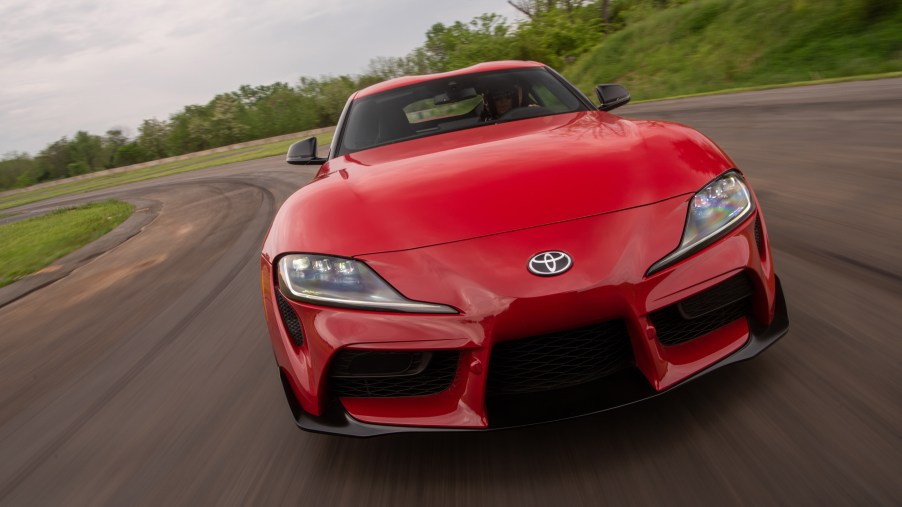
Six Ways the 2020 Toyota Supra Could Be Better
The last Supra offered in North America went out of production after the 1998 motor year. Car enthusiasts desired a new one as the legend of the brand grew over the years. The 2020 Toyota Supra has drawn a lot of controversy in the automobile market. Doug DeMuro had a lot to say about this model on his YouTube channel.
Overview
The early models of the Supra, released in the 1970s, were based on the Toyota Celica. It became its model in the 1980s. In 1993, Toyota rolled out the Mark IV Supra that later starred in the Fast and the Furious franchise. It turned out to be one of the most desirable sports cars of that decade.
When Supra’s productions came to a halt in the late ’90s, enthusiasts became obsessed with the sports car’s robust GZ engine and immense tuning potential. The 2020 Toyota Supra now boasts 335 hp and 365 lb-ft from its straight-six engine. Toyota also claims that it does 0 to 60 mph in 4.1 seconds. Though the automaker has based the new Supra the BMW Z4, could it be any better? Here’s what DeMuro thinks:
Open Up The Vents
The sports car’s front air dam provides cooling to the engine. Toyota realized that the air dam provided too much cooling when it tested the car. The Japanese automaker chose to block off the bottom part, so it doesn’t cool the engine too much. Tuning firms can go in and open it more for better cooling if they get more power out of it.
Car enthusiasts have said a lot about the fact the Supra has fake vents on the outside. Toyota reported that these are not fake but dummy vents for tuning companies. They can pull the vents from such areas and use them for brake cooling or better downforce. That is the same story with the vent on the hood.
Mount An Extra Brace
Toyota intentionally damped down the Supra to provide an opportunity for the aftermarket. For better chassis stiffness, you can mount an extra brace on the space that the automaker left in the hood. You could also screw the brace in the available holes.
Strengthen The Rear Hatch
The material that the rear hatch is made off isn’t strong enough to support a rear wing. Toyota added more material on this part for tuning companies to add an arm that couldn’t just fly off. More complexity, weight, and probably more expense went to making this provision possible.
Install A Differential Cooler
The car has no factory differential cooler although Toyota says that it left a space for one. When people start using it on the race track, tuning firms can go in and put a differential cooler on. They can do the same when they start getting more power from the Supra. Automakers, especially Jeep manufacturers, often leave holes for the aftermarket to do things.
Widen The Cargo Area’s Opening
Accessing the cargo area is a little bit annoying because there is no little button in the rear to pop it open when the Supra is unlocked. Your only access is a button on the key fob or one on the driver’s door panel. The opening is also narrower than the actual cargo space. You may not be able to get in some stuff even though it fits.
Customize The Door Panels
The passenger’s side lacks the cargo area access button present on the driver’s door. Instead of creating a new door panel to hide the button, Toyota covers it. You’ll also notice that the color on the passenger’s panel does not match the seats and driver’s panel.
All images provided by the manufacturer unless otherwise noted.


